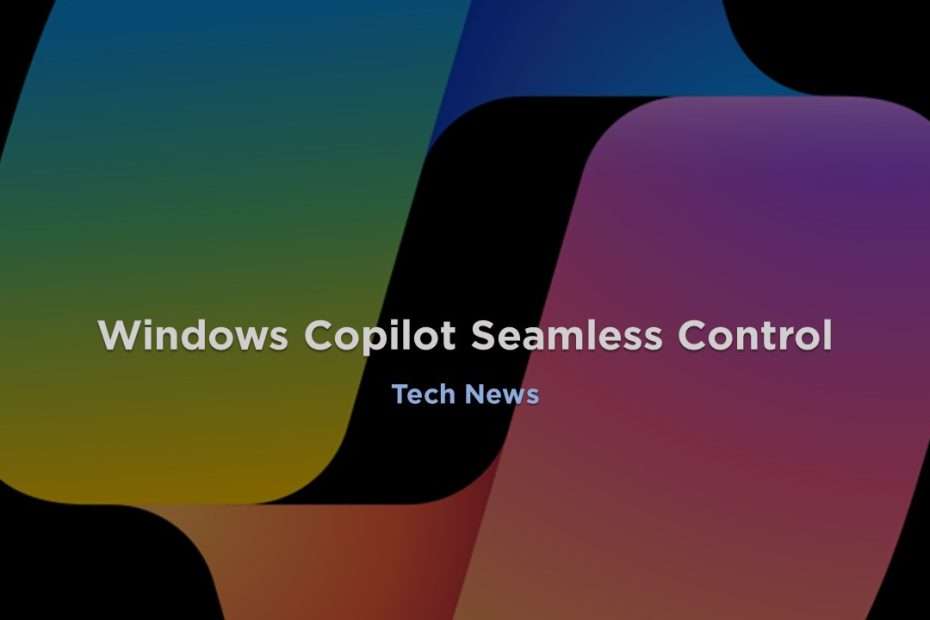In 2023, Microsoft generated anticipation by unveiling glimpses of the future capabilities of its new AI assistant. Despite the teasers, the full extent of its use cases still remains somewhat unclear. Dell, however, has taken the initiative to provide a vivid showcase of Copilot’s potential, highlighting its ability to leverage NPUs (Neural Processing Units) for the benefit of ordinary users. It’s important to note that this showcase is not an official presentation by Microsoft but rather Dell’s interpretation of the possibilities that could be achieved with Copilot.
In the spotlight is Windows 11 Copilot, as Dell’s demonstration highlights its practical application in the realm of settings navigation. The animated presentation not only illustrates the AI assistant’s capability to assist users in finding and adjusting settings but also points towards a future where PCs with Neural Processing Units (NPUs) play a pivotal role. This glimpse into the evolving landscape of AI integration and hardware advancements showcases how Copilot could serve as a key facilitator in navigating the interface of these advanced PCs, offering users a more intuitive and efficient computing experience.
The video illustrates a practical scenario where a user interacts with Microsoft’s chatbot to address a specific query regarding the adjustment of trackpad brightness. Notably, the chatbot’s rapid and precise response is exemplified by the immediate appearance of a brightness slider within the chat window. As the user manipulates the slider, the backlit icons on the trackpad respond in kind, demonstrating the seamless integration of the chatbot’s interface with tangible, real-time adjustments. This example highlights the effectiveness and user-centric approach of Microsoft’s chatbot in delivering prompt and relevant solutions to user inquiries.
In a second video demonstration, the capabilities of Copilot come to the forefront as it showcases the AI assistant’s ability to make adjustments to power settings based on user requests. Specifically, when the user expresses a desire to optimize their PC for maximum speed, Copilot efficiently modifies the power settings accordingly. The seamless integration allows users to experience enhanced performance with just a simple command. Additionally, the chatbot goes a step further by providing an estimate of the remaining battery power under the newly configured settings, offering users valuable insights into the potential trade-offs between performance and battery life.
Windows 11’s forthcoming integration of generative AI has been teased with a glimpse into its potential applications. One illustrative example involves users being able to instruct Copilot to locate a specific file recently received from a particular person within a designated application, such as WhatsApp. This functionality not only streamlines the file retrieval process but also showcases the adaptability of Copilot to context-specific queries. Another highlighted scenario involves seeking details about graphics drivers without the need to navigate through menus. These examples offer a preview of how Copilot’s generative AI integration can significantly enhance user interactions with Windows 11 by providing quick and context-sensitive solutions, ultimately simplifying and personalizing the user experience.
The impending integration of generative AI into Windows 11 brings with it a host of transformative features, as hinted at by Microsoft’s preview. Users can anticipate a more intuitive and efficient experience, exemplified by the ability to instruct Copilot to perform intricate tasks. Retrieving specific files from designated apps and obtaining details like graphics driver information become seamless processes, eliminating the need for users to navigate through various menus. The potential for context-sensitive queries to fundamentally change the way users interact with Windows highlights the adaptability and user-centric approach of Copilot, promising a more streamlined and personalized computing experience.
Dell’s exploration of Copilot’s capabilities extends to its potential to execute specific actions automatically based on contextual cues. For instance, Copilot could dynamically adjust network security settings when a user is logged into public Wi-Fi, enhancing cybersecurity. Additionally, it can engage battery-saving mode automatically when the device is unplugged, optimizing power efficiency. Copilot’s ability to proactively address issues includes shutting down programs that may crash during Windows startup, ensuring a smoother user experience. Importantly, the AI communicates these automated actions to users, providing transparency and allowing them the option to reverse these changes if desired. This functionality not only simplifies day-to-day tasks but also brings attention to valuable yet often overlooked features, contributing to an enhanced and user-friendly computing environment.
Dell’s demonstration of Copilot’s capabilities offers just a glimpse into the potential applications of AI, leaving room for further exploration beyond the showcased features. Microsoft has previously hinted at the broader scope of Neural Processing Units (NPUs) and their role in reducing dependence on cloud servers for running generative AI models. This suggests a future where AI tasks can be efficiently processed on-device, leading to enhanced performance and reduced latency. Moreover, the utilization of NPUs could play a pivotal role in streamlining AI application development, opening up possibilities for creating more sophisticated and responsive applications that leverage the power of on-device processing.
Maybe you liked other articles?

